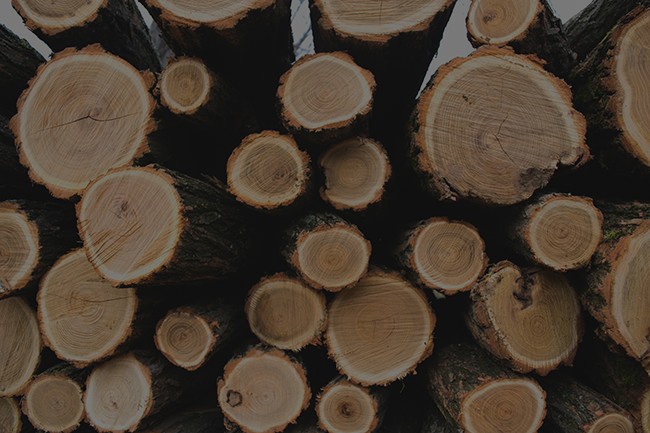The team here at Plyco are unsurprisingly immersed in the plywood community. Being around stacks and stacks of plywood almost every single day means you see almost everything that it has to offer. However, there are still occasions, whether it be a crafty customer, word of mouth or something on the news, where we see plywood applied in an extremely unexpected way. There are a lot of typical ways that plywood is used so whenever we so one of these out there and creative designs we’re reminded that almost anything is possible. For today’s blog post we’re putting six of these surprising implementations under the microscope.
1. Plywood Bed

A good night's sleep
Here we’re starting off with something relatively simple in the grand scheme of things, but not something you see too often. Making your own DIY plywood bed is something is so incredibly simple, but not often done. All it takes is a little bit of tool skill and a few sheets of plywood and you could be getting a great night’s sleep on something you created from scratch yourself! The very best part about this use of plywood is that you can design the bed however you like, rather than conforming to whatever commercially available beds are around. This example from Gonzalez Design Studio perfectly showcases that aspect, with storage space built into the bed as well as wheels attached to the bottom. These additions respectively help increase space in your bedroom and make the bed easily movable, two huge benefits you normally wouldn’t get from a run of the mill bed. If you pick up some plywood like our CD Non-Structural Plywood you could easily make this yourself!
2. Plywood Skyscrapers

Wooden-'t mind living here
Stepping it up a notch from plywood beds, wooden skyscrapers are a thing believe it or not. Sustainability has become a much more highly desired trait in recent years and building tall skyscrapers out of wood is actually one of the more sustainable methods. A technology known as cross-laminated timber has arrived onto the scene and has helped make timber offer superior performance, cost and environmentally friendly benefits compared to concrete or steel. The way that cross-laminated timber is assembled helps make the product much stronger and also allows manufacturers to use knotty or irregular shaped wood that would generally be discarded. Wooden skyscrapers have taken off so much to the point where a Japanese company has begun the planning process to build the world’s tallest wooden skyscraper at a staggering 350 metres tall!
3. Plywood Dentures

Thankfully these aren't necessary anymore
Way back in the day and well before the modern technology we have now was around, there is evidence that wooden dentures were an actual thing. Prior to modern western dentistry practices becoming prevalent in the 19th century, people would often use wood as a solution to not having all their teeth. The oldest pair discovered date back to 16th century Japan. In Western cultures were usually a standard design for those who couldn’t afford the pricier options of bone or ivory dentures. Unfortunately, the cheaper option also meant the lower quality options as the wooden dentures would slowly decay inside the wearer’s mouth.
4. Plywood Cars

Are they sure this isn't something out of a movie?
It seems a little absurd to attempt to build a car out of wood, but multiple people have tried it. In 2008 a man in Ukraine quit his job and sold his other cars in an attempt to build a car made entirely out of wood – and it worked! The project used Oak in combination with secured bolts and glue, with a waterproof lacquer used to top it all off. After over a year’s worth of plugging away at the job, it was finally deemed roadworthy and the man was legally allowed to drive it. Also in 2008, a couple from Bosnia started a smaller scale version of this as they attempted to woodify their Volkswagen Beetle.
5. Plywood Torpedo
Fire the torpedoes
While never used as actual torpedo to fire at enemies, during World War II the British used wood to create “test torpedoes”. These torpedoes would be fired as a way to gauge how the actual torpedoes would perform when launched. Stokes Bay was the site of one of the busiest naval test ranges during this period of war and over the years numerous wooden torpedoes have been pulled in from the waters.
6. Plywood Fighter Planes

Hop in
Sticking with the World War II theme, the British devised a bomber crafted from wood. Yes, Mr Burns wasn't entirely crazy when he spoke about the Spruce Moose in The Simpsons. This design came about from the De Havilland company during the war and was a response to the need to have a faster bomber. The Royal Air Force put together a prototype in 1940 that was nicknamed the Mosquito and was constructed from heat-formed plywood that was placed over a wooden frame and powered by four engines. The quickness and load-bearing qualities of the Mosquito soon made it extremely popular and the RAF commissioned a whole range of similar aircraft as a result. These planes were incredibly useful during the war and were even used during some pretty high-profile raids like the bombing of Nazi rallies and the Gestapo headquarters in Berlin.
While you might not need plywood for anything as extravagant as a skyscraper or fighter plane, here at Plyco we still have you covered even if you aren’t trying something so daring. Check out our online store and catalogue to browse our entire range and we’re sure you’ll find something that suits your next project’s needs!


.svg)

.png)
.png)








